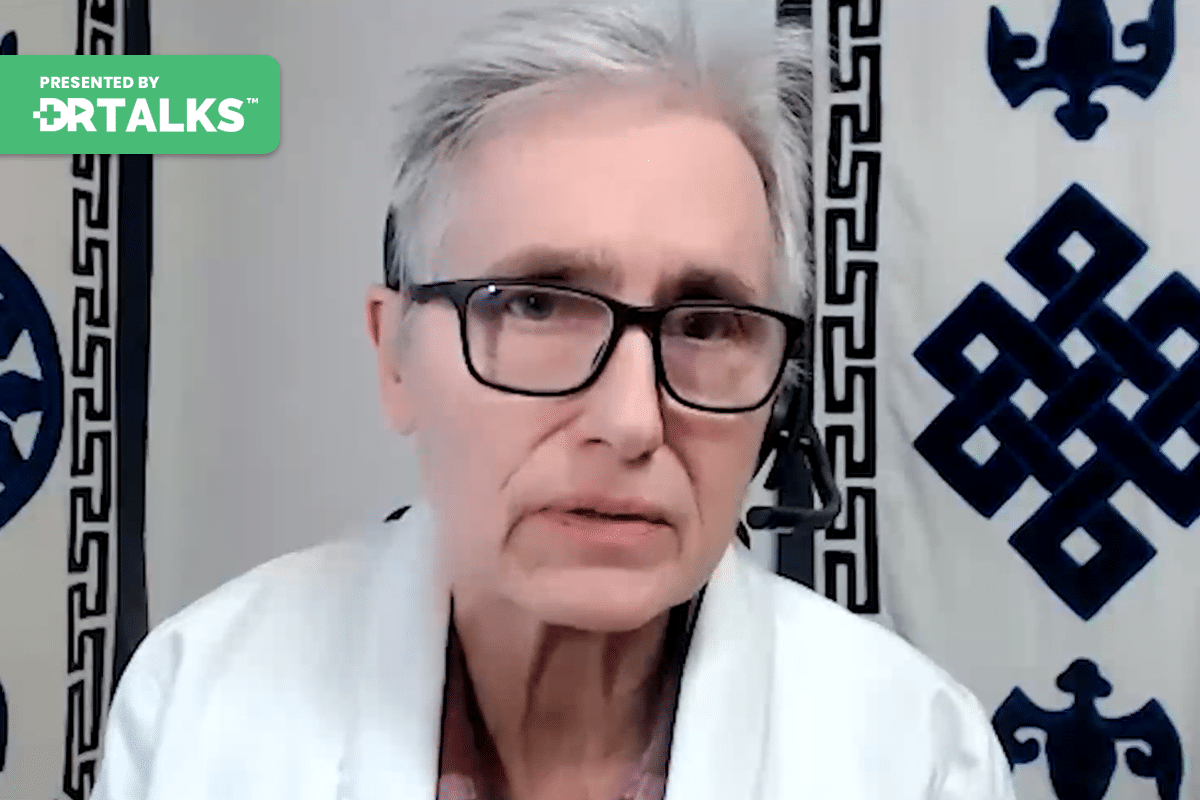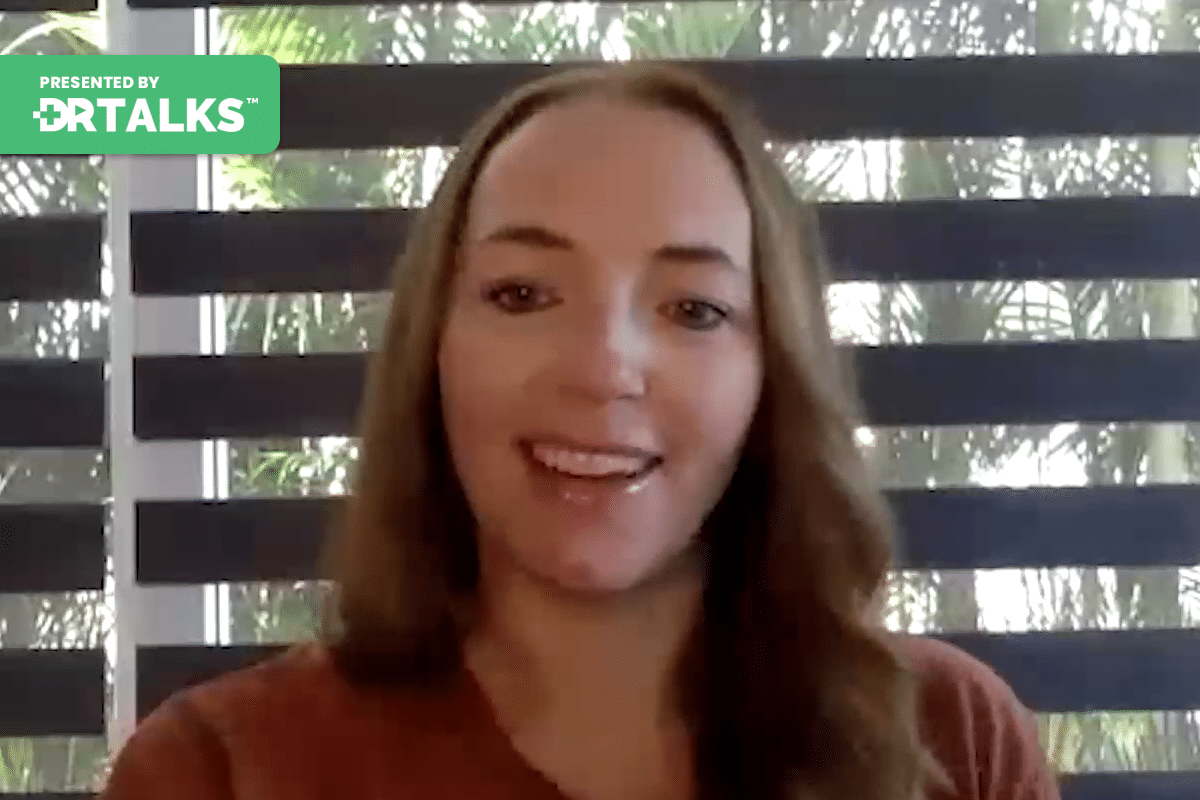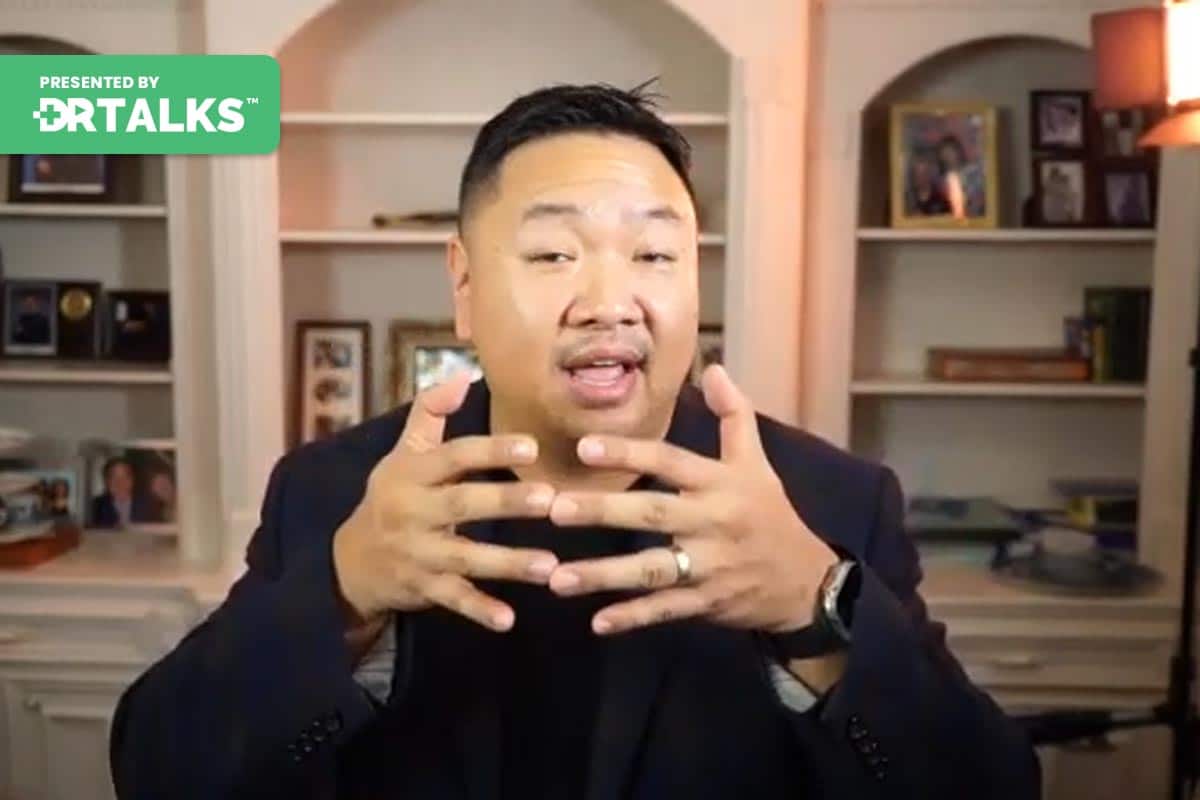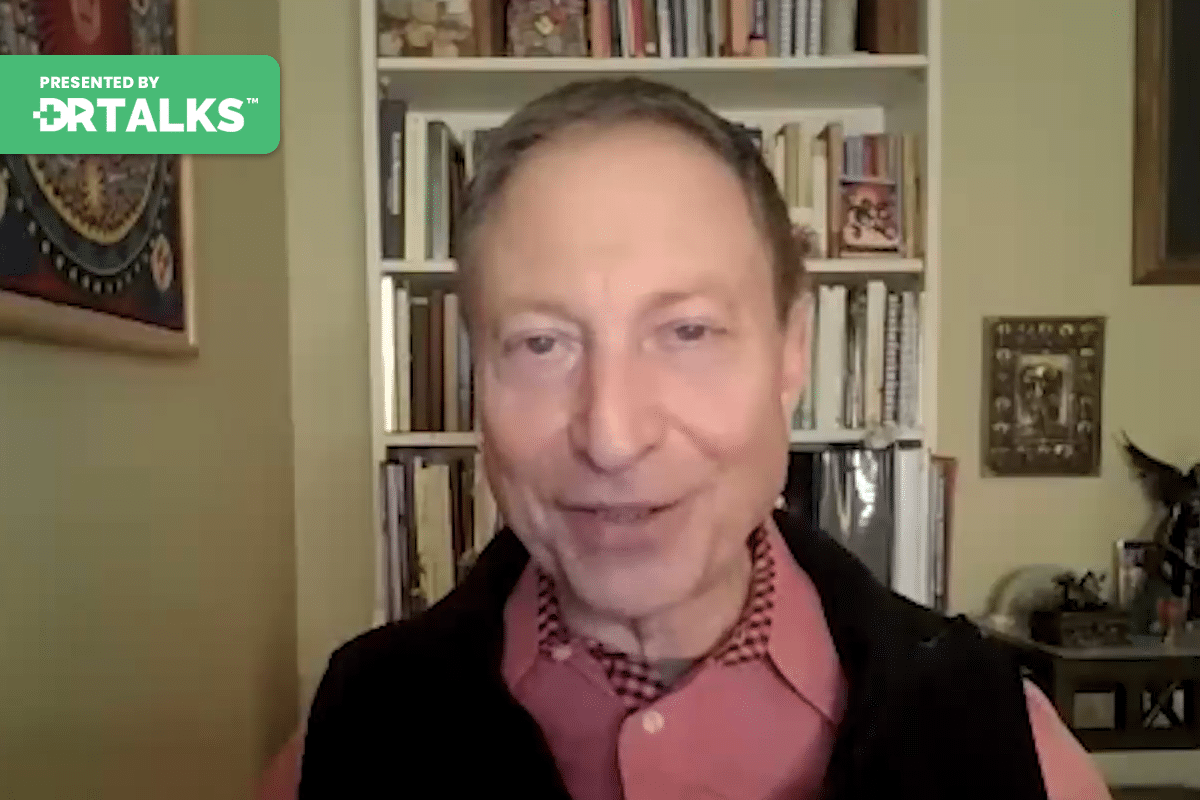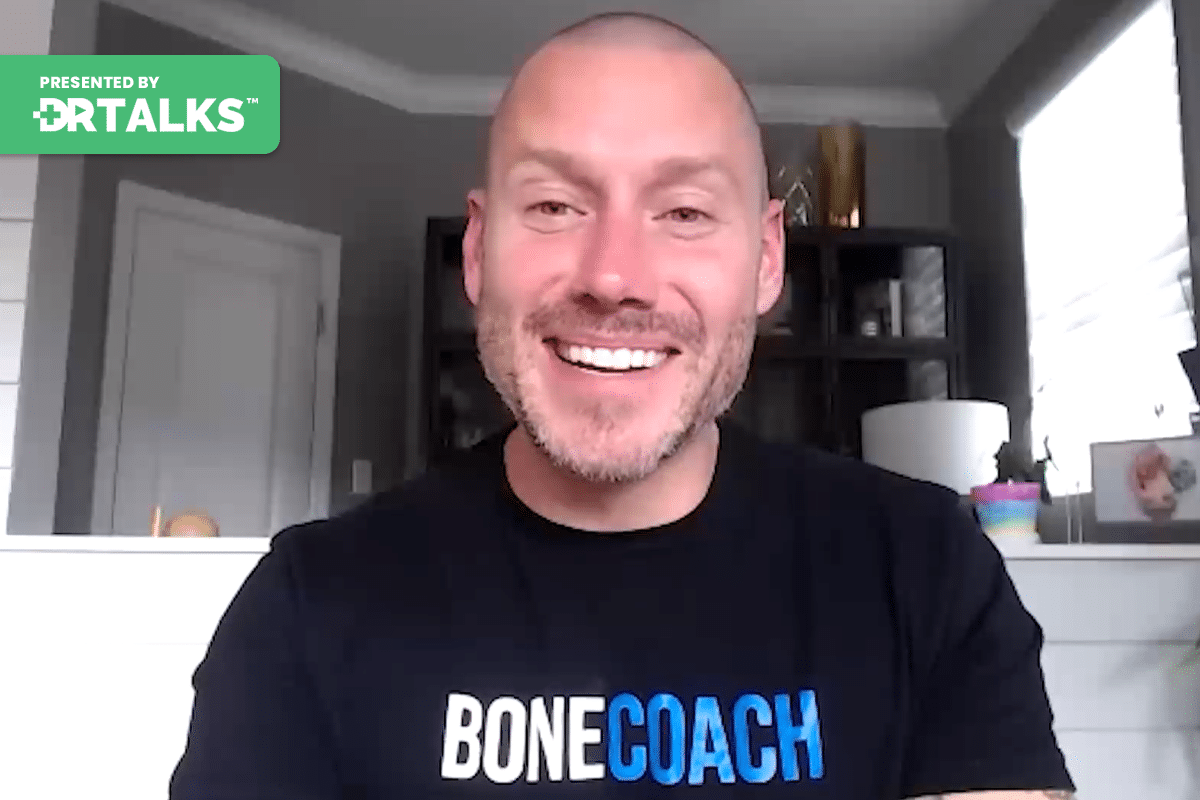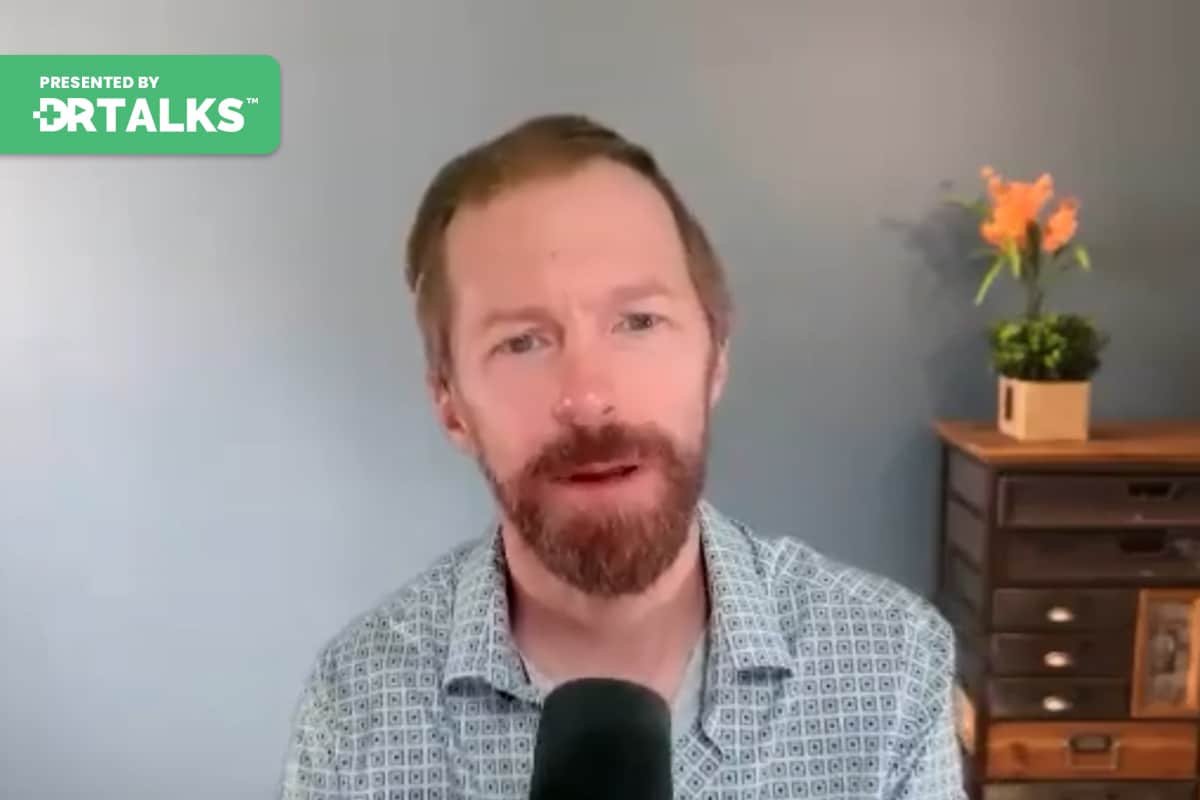Join the discussion below

Dr. Darin Ingels is a Licensed Naturopathic Doctor, Author, International Speaker, and leading authority on Lyme disease. He is a former Lyme patient who overcame his own 3-year battle with Lyme disease, after having failed conventional treatment and became progressively debilitated. Dr. Ingels found that proper diet, lifestyle management and... Read More

Dr. Terry Wahls is an Institute for Functional Medicine Certified Practitioner and a board-certified internal medicine physician. She also conducts clinical trials testing the efficacy of diet and lifestyle in the setting of multiple sclerosis. In 2018 she was awarded the Institute for Functional Medicine’s Linus Pauling Award for her... Read More
- How a therapeutic diet can help with your autoimmunity
- Lifestyle management changes you can implement today to heal
- Stop autoimmunity in its tracks and reverse autoimmune disease is possible
Darin Ingels, ND
Welcome everyone to this episode of the Lyme summit. And I’m really happy to have my friend and colleague, Dr. Terry Wahls joining me today. And let me just tell you a little bit about Dr. Wahls. We don’t know her. She’s an amazing doctor, individual researcher. She’s a clinical professor at the University of Iowa. She teaches internal medicine residents, does clinical research, has published over 60 papers, abstracts, scientific documents. And it’s just really one of the, I think, thought leaders in our community on using diet and therapeutic lifestyle. All these natural things that, you know, we’ve been talking about during the summit to really help you heal. So, Dr. Wahls, I’m just so happy to have you join us.
Terry Wahls, MD
Hey, thanks for having me.
Darin Ingels, ND
You know, I know you’ve told your story a million times, but I think for people who aren’t aware, it’s important to have the background of what you do, what you do. So can you just share a little bit about kind of how your career progressed and how you’re sure to do what you do today.
Terry Wahls, MD
So but tell it in real time. 20 years ago, walking with my wife, Jackie, a half mile from home, my left leg grows weak, dragging it home when I see the neurologist, he says, Terry, this could be bad or really, really bad. And while I go through the workup the next three weeks, I think about my 20 years of relentless electrical face pain that have been getting worse. And I’m praying secretly for a fetal diagnosis. Three weeks later, I hear multiple sclerosis. I see the best people take the newest drugs. Three years later, I hear tilt, recline, wheelchair. My face pains continue to worsen. My ten year old daughter hugs me as to stream down my face. But I am a physician. I go to pub med and I begin reading the basic science and I decide mitochondria are what drives disability and I begin creating a supplement cocktail to support my mitochondria. I discover a study using electrical stimulation of muscles. Ask my physical therapist, Can I try that? He calls it E stem. He says It’s for athletes and that it’s painful. But he gives me a test session. It does hurt a lot. A whole lot. But when it’s over, I feel great. He says it’s because of the endorphins. We add them to my physical therapy. And then I discovered with the Institute for Functional Medicine, I take the course of neuroprotection.
I have a longer list of supplements and then I have a really big aha. I’ve already been doing the Paleo diet for five years. What if I redesign my paleo diet based on all these things I’m taking supplement for? That’s my research. But I figure out this new way of eating. I start Dec 26, 2007. Now at that time, I cannot sit up in a regular chair for more than 10 minutes. I can walk just a few steps using two walking sticks. I’m beginning to have brain fog. My article Face paint is far more severe, but I start this new way of eating. One month later, my fatigue is markedly better. My mental clarity markedly improved. My physical therapist says, Teri, you’re getting stronger. I’m going to advance your exercises. Three months later, I am walking with walking sticks and without walking sticks. And then on Mother’s Day, I want to try riding my bike for the first time in six years. And we have an emergency family meeting. Jacqui has my big six year old boy, Zach, jog alongside on the left.
My 13 year old daughter, Zeb, jog alongside on the right and Jack will follow. I push off the bike while heels, but I catch my balance and I bike around the block. A big 16 year old boy. He’s crying. That 13 year old girl. She’s crying. Jackie’s crying, you know, and I cry even now talking about that moment, because that’s when I understood that the current understanding of secondary progressive multiple sclerosis is incomplete. And who knew how much recovery might be possible after that? I rode my bike a little everyday, a little bit farther, and then in October, Jackie signed me up for the Courage Ride, 18.5 miles. And once again, when I cross that finish line, we’re all crying, my kids, Jackie, and I’m crying. And that fundamentally changes how I think about disease and health, the way I practice medicine and the research that I do. And that’s why I am so passionate about teaching clinicians like yourself. Darren, and the public that there is so much that we can do that even if you have profound recovery, there’s so much under your control. And forgive me for Gabriel, teary eyed there, but you know, I can’t tell that story without crying. It’s just not possible.
Darin Ingels, ND
It’s such an amazing story. And the first time I heard about it and of course, the first time I met you and you’ve told it to me in person, you know, it’s also, you know, very near and dear to my heart. I mean, for those of you who don’t know, I mean, I also have M.S. and so I know Tara has been a huge inspiration to me. I follow a lot of her guidelines. You know, for someone, again, who has come from being wheelchair bound to being very physically active and, you know, doing everything that we teach, certainly in naturopathic medicine, you know, it shows that recovery is possible. And, you know, I know this is a Lyme summer and you’re thinking, well, okay, what does that have to do with Lyme? Well, you know, my story is that I had Lyme disease first. I had Lyme disease in 2002. And it took me three years to recover. And if you look at the symptoms of Lyme disease and you look at symptoms of M.S. and really a lot of other neurodegenerative diseases, there’s so much clinical overlap. It really confuses the picture as a patient. And sometimes as a doctor, you know, we’re trying to sort out, you know, what is causing, you know, this these collection of symptoms. And so, you know, I had Lyme disease and I recovered and I really went almost a decade with zero symptoms. And I can still remember I used to I got numbness on like my thumb on my left hand and that was it.
And I’m like, oh, that’s kind of weird. And then not long later, I woke up one morning and my left eye looked dim. I could see, but it was dim. And I went to my eye doctor and he looked at my eyes and everything’s pop, you know, looks fine. And then in my mind, I kept thinking, Oh, this is just a weird Lyme symptom. I must be having a relapse. And of course, many years later and talking to my neurologist, they said, Oh yeah, well, that division is one of the first signs of M.S. and nobody you know, I’m a doctor, and it didn’t even cross my mind because having to have that history of Lyme disease so I think is important for people who have been dealing with Lyme. You know, when you’ve been having these other collection of symptoms. I think the core element that we really want to talk about today is neuro inflammation. And everything that we’re trying to do is we’re trying to improve that function in the brain, get the inflammation under control and all the work that you’ve done in your research is really about controlling that, right?
Terry Wahls, MD
Correct. Correct. You know, and now what’s really interesting, I’ve been a champion of diet lifestyle and that we have to teach people to improve their diet, meditate, improve their sleep. And when I first were having these conversations in 2008, it was so radical and people thought I was so dangerous for telling people that, you know, you got to improve your diet, ask for physical therapy, consult, meditate. That was very, very dangerous. But, you know, I was doing my research, publishing her papers, and more and more papers were up to her eighth clinical trial. And we have hundreds of citations now for papers in my cancer. The idea that diet matters for M.S. is is being much more accepted. In fact, my post-doc did a wonderful analysis of all the dietary studies that have been conducted in this area. Ms.. And it was published in neurology, the highest impact journal of all. And there was an accompanying editorial saying, yes, we have evidence. There is lots of evidence. Now, that diet really does matter and we should be sending all of our patients to a nutrition professional to help the patient improve their diet. And that, yes, you can do a paleo diet. You can do a mediterranean diet, you could do dietary guidelines, you could do a ketogenic diet. We need to have you stop doing the standard American diet because we know that what is really Terryble.
Darin Ingels, ND
I think that’s an understatement. Correct. Well, talk a little bit about the dietary approach that you’ve developed. I mean, I know it’s cure a variant of the Paleo diet, but can you kind of go through what that involves?
Terry Wahls, MD
So I had adopted the Paleo diet giving up all grains, all legumes and dairy, 2000 to 23. I’m in the sort of clean wheelchair, you know, going relentlessly downhill. And then I had this idea that mitochondria the problem I had supplements that slows my decline. I feel definitely way worse without the supplements. I get a longer list of supplements from the AFM, but it was when I had this aha. And of course I’m embarrassed there and like how long it took me to have this a like you know if I, if I figure out where they are in the food supply, these nutrients probably have other nutrients that are really important and I bet, yeah, it’s going to be really good for my brain. So when in the first year when I was doing this, I had a little notebook of here are the foods I got to be sure that I’m eating every week.
And then, you know, when in October and, you know, I biked 18 miles, I start talking to my patients at the VA like, okay, we got to we got to fix your diet. And I couldn’t give them this long list. So what I really was having to think deeply, what are the sort of simple, easy to remember food rules that will help people do that and over time. And then I would do some checks to say like, okay, if I use these food groups, will that get the key nutrients that I that I care so much about? And that basically is how the all star is born. And it’s easier to add than to subtract. So the first thing I have my vets do is we have an aim of nine cups of vegetables and that stuff measured, raw. So if you have your dinner plate, a standard dinner plate, and you keep it with your vegetables so you can’t see the bottom of the plate at all, that’s three cups. And so it’s three plate falls of vegetables raw. And then if you cook it, they’ll shrink by half.
And I put it in three categories green, leafy vegetables, sulfur, rich in that cabbage, onion, mushroom, family vegetables, and then things that are deeply pigmented. And here I’m thinking of color should be all the way through. So if you look at your beautiful red apple, red on the outside, white on the inside, and apples are good for you, but it’s not going to hit all that pigment, which is a great marker for polyphenols and antioxidants. But a peach, those colored all the way through, a black grape colored all the way through plums, colored through strawberries, colored through beets, carrots, peppers, colored through in. Then I want to be sure that we have enough protein. And I’m mindful that there are some folks who are vegetarian for their spiritual beliefs. They’re going to need to eat legumes and grains, preferably gluten free grains, to have enough protein if they’re a meat eater, we’ll have them eat meat, you know, so and then so that’s the stuff to add, the stuff to remove it. We wanted to reduce the added sugar, reduce the processed foods, eliminate gluten, contain grains. So that’s wheat, rye, barley, many ancient grains in dairy you can have clarified butter.
So there’s less of the dairy protein in that casein. And we also remove eggs. So the third most common inflammation producing food. And part of the reason that I’m so particular about that one is if I eat gluten, dairy, eggs, it will trigger my electrical face pains. So in about six occasional, you know, 8 hours, very occasionally 24 hours, I have incapacitating trigeminal neuralgia. So what we did our very first clinical trial, the IAB required me to use the same supplements, the same routine that I used for my self care. And so that meant no gluten, dairy, rex And the way research works is you have your preliminary data and then use that for your next study, your next study, your next study. And so all of my clinical trials have basically used this kind of dietary plan in my clinical practice and actually in my class at the VA, I would encourage people to take the eggs out, preferably for 3 to 6 months, and then because if you tolerate eggs, they really are a great food. The yolk has really great nutrition for your brain. The white is a good source of protein. So after three six months, have the yolks see how they do. If you do wealthy yolks, then add the whites. We have the whole egg. If you do well, have a go ahead and enjoy eggs again.
Darin Ingels, ND
Well, I mean, the one thing that I have to kind of laugh, I was at your conference in 2019, right before the pandemic in Iowa, and you were lucky enough to have the hotel that hosted the conference feed. Everybody you know, the diet as you recommended. And I can remember sitting down with Deanna Minick and Medea seed, and we were all looking to find like, oh, my gosh, this is a lot of food. I think, you know, people don’t really think about, you know, the quantity of food that you’re eating, but there’s a purpose behind it, right? Because, you know, you’ve got to put all that nutrition in the body to give it what it needs to heal. And when you’re already dealing with it, particularly a neurodegenerative disorder, you know, your body desperately needs that fuel to do what it’s designed to do. I think so many people out there, you know, when they’re in a state of not feeling well, of course, they tend to eat crappy food because, you know, they feel bad about themselves. They feel depressed. It’s easy just to go for junk food, which of course, doesn’t really serve your higher purpose or the thought of just sitting down and preparing a full meal. It seems so. And guilt hard. So convenience foods are much easier. So, you know, it does take a little forethought and planning, but it’s also really quite easy because the foods themselves are quite simple to cook.
Terry Wahls, MD
You know, if you think about construction, when you’re building a new site, a new construction, a new house, you bring all the equipment and you put it up. Now, if a windstorm comes through damages my house and I have to repair it, that requires more resource than building it. Fresh from New. And the same is true for our bodies. If we are repairing damaged tissues. Yeah, there’s it requires more resources to clear out the damaged tissue and then rebuild the new tissue so the nutritional needs are much greater. Following surgery, following injury. And for anyone who hopes to recover from a chronic kind of chronic illness and if you want to recover from a brain related issue or a peripheral nerve related issue, your nutritional needs for neural tissue are much greater than someone who is in great health.
Darin Ingels, ND
Well, an important point, I think, to bring up here. You know, we know from the research on Lyme disease that there is a potential autoimmune event that Lyme can create. And we know that it can target the gray matter of your brain, the white matter of your brain, your peripheral nerves, your joints. But in terms of all the neurological tissue, I mean, what’s that going to look like clinically? You’re going to have neuropathy, you’re going to have brain fog, you’re going to have fatigue and go, well, gosh, this sounds a lot like M.S. And again, this is where it gets to be a little bit clinically confusing because of that that clinical overlap. But in both.
Terry Wahls, MD
Can occur at the same time.
Darin Ingels, ND
Absolutely. So, you know, everything that you’re doing in an effort really to help folks with M.S., it’s so applies to Lyme disease because. Absolutely foundationally, we’re dealing with the same fundamental problems that may manifest in different ways. But, you know, I think we know about how important diet is and along those lines, the importance of our gut microbiome. I mean, there’s so much research on how important our gut bugs are for, you know, I think pretty much any chronic illness nowadays has got some research. And certainly with our mice, we know that there are certain bacteria that tend to be higher on the bacteria that tend to be lower. You know, what are your thoughts on the gut microbiome? And, you know, is diet really the best way to help feed that and repair what may have been lost earlier in life?
Terry Wahls, MD
Well, the food we eat are going to be then consumed by the bacteria in our gut. And depending on what you’re eating, you’re going to fertilize different species of bacteria. So if you have a diet that is rich in sugar, processed foods, you have a different mix of bacteria. Then if you have a diet that says a ketogenic diet, low in carbs, high in fat, or if you have a carnivore diet with no carbs and only animal products, or a paleo Mediterranean diet that is high in vegetables and more moderate in meat, we know that the ultra processed so a lot of processed foods high in added sugar has a mix of bacteria that is associated with worse disease course for em’s worse disease course for diabetes pre-diabetes metabolic syndrome which if you have that you have a worse outcome for multiple sclerosis and a worse outcome for Lyme disease, by the way. So the food that you eat really drives the risk of co morbid problems obesity, diabetes, metabolic syndrome, high blood pressure. And we have increasing recognition that the food you eat drives what microbes are going to flourish, what microbes will starve, and likely the severity of symptoms, whether you have a autoimmune disease or you have a chronic infectious problem related to Lyme disease.
Darin Ingels, ND
Yeah, I worry for all of the people who are dealing with Lyme and other tick borne illness because it’s not an uncommon practice that people are on long term antibiotics as part of their Lyme treatment. Now my approach is different. I rarely use antibiotics. I prefer to use herbs for a lot of reasons, but it’s again, it’s not uncommon that people have been on antibiotics anywhere from weeks to months, in some cases, many, many years. So I worry about that damage to the gut microbiome because again, how much of these beneficial bacteria I mean, we know there’s going to be collateral damage. I think that’s unavoidable when you’re on antibiotics. But to the extent I know, do we lose certain species that at that point we can’t really recover.
Terry Wahls, MD
Much harder to get better ability.
Darin Ingels, ND
To recover. So, you know, if you’ve been one of those people who have been on long term antibiotics, I mean, again, the diet is going to be critical.
Terry Wahls, MD
That will be key. And yeah, there are some interesting studies that have come out, Darin, that have looked at people who have either a high fiber diet or a high fermented foods diet, and that’s six servings. So it’s a cup and a half absorb kraut kimchi or a cup and a half of yogurt, I think was two cups of yogurt was the equivalent for the six servings. And they measure the change in the microbiome. And so while you’re on the fermented foods or the high fiber, the microbiome changed quite considerably. And then people start their fiber and stop their fermented foods. So if you stop the fiber, the diet goes immediately back to the baseline diet. Now, it was really interesting was the fermented foods, the change in the microbiome was sustained. They did not go back to the previous baseline. I find that remarkably encouraging, that if you have a high fermented foods diet, you are changing your microbiome populations in ways that stay.
So and I know there are some people who have histamine intolerance and they can’t tolerate a high fermented foods diet. But if you can start small and work your way gradually up, this is so, so good for having more diversity for your microbiome. And for those who follow me on Instagram, you’ll see that I have lots and lots of fermented food. It’s a rare day that I don’t have fermented food. And it’s not uncommon for me to have a couple of cups occasionally, even three cups of sauerkraut or kimchi in my meals. And I love making things like beet kobus out of fermented beet, not fermented beets, but fermented beet water. And so I’ll have a pint of that that is like so, so delicious. No alcohol, but still you have to really like beets. But it’s super wonderful.
Darin Ingels, ND
Yeah. Oh, I’m glad you mentioned the fermented foods thing. I was going to ask you because I know it’s something you talk about in your book, and I know you’re a big advocate of adding fermented foods. And again, I follow you on Instagram. I see your videos all the time. It seems like you’re showing your meals almost every dinner meal. There’s some fermented vegetables on there. But again, you know, I think most people, you know, even if you’re not crazy on kimchi, for me, kimchi can be a little spicy. But sauerkraut super easy and you can find it everywhere. Yeah, where I live in California, we have a lot of places that hand make their fermented foods. So if you don’t want to do it yourself, you can probably find good quality fermented sauerkraut without being the commercial stuff with sugar and other things added to it.
Terry Wahls, MD
You know, it’s a great way to begin adding some fermented food is to if you have a a soup that you’re having. So I have my bowl of soup and then I’ll add a big spoon of sauerkraut or kimchi into the soup and stir it in. It adds another flavor to the soup. It could sort of dilutes it. And this is a very lovely way to sneak a little ferment into your family’s diet and gradually increase it. So they have no idea that you’ve just upped the quality of their microbiome super easy.
Darin Ingels, ND
I like things that are cheap and easy and absolutely effort, you know, I know that again, diet can be very overwhelming for people, but in my practice and I think your experience has been the same, is that it makes such a big difference. It moves the needle better, I think, than so many other things we try and do. Again, you can take a lot of supplements which can definitely help, but I think the one factor, again, if I have one thing that I want people to do when they’re dealing with Lyme or any of these other things we’re talking about is make those diet changes. And, you know, even like gluten, dairy. I mean, I’m sure you’ve heard this as well as like well, you know, I’ve I’ve never noticed any difference. I don’t feel the difference. But if you’ve been feeling bad for a long time, how would you tell? And, you know, we know from the research on gluten that once you stop eating it, it takes months to get all that protein out of your gastrointestinal tract.
Terry Wahls, MD
You know, I also make the observation that some people go gluten free and start buying gluten free pastas, bread, gluten free cookies. And so I’m still having seven servings of gluten can of breads, cereals, pastas every day, and I’ve switched to gluten free. So now it’s higher glycemic index, so ultra processed and so I’ve not really improve the quality of my diet. If you take out the gluten containing products and replace them with these radical things known as vegetables, whether there are potatoes or yams and squashes, I predict you’ll you would discover that one, you’re saving a lot of money and you feel a lot better. We talk a lot about using things like soups, stews, meals in your slow cooker. And then what I do, I like to cook once and have the same meal again so that I can cook today. Can the soups, stews that I’ve made and then have it for days later that way it’s very efficient, time wise. And so, you know, I’m working all day. All I have to do is open up my jar of soup, heat it up, add my spoon of sauerkraut, and I’ve got a great meal in 5 minutes.
Darin Ingels, ND
Super easy.
Terry Wahls, MD
Super easy.
Darin Ingels, ND
So what are some other ways that you recommend to help people get their information on control? If people are following your diet, they’re managing what they put in their mouth. What are some other strategies that people can start to do to help get that inflammation under control?
Terry Wahls, MD
Improve your sleep? One of the things that has certainly been very helpful for me is to wear one of the wearable technologies that gives me feedback on how active I’ve been in the day in the quality of my sleep. I that, you know, for so many years in my life, I thought it was fine to have just 4 hours of sleep at night. That was, you know, sleep was wasted time that, you know, I have a lot to do. I’m ambitious. I want, you know, I got stuff to do. And eventually I came to understand that sleep is very restorative. It’s when we remove toxins, it’s when we make hormones, it’s when we do our structural repairs. And so if you’re not sleeping, you aren’t doing that work. Then I started paying attention to have been a consistent bedtime, a consistent time that I’m getting up. If I wake up during the night, stay in bed and close my eyes and meditate so that over time that improves the quality of my sleep. Another thing that you can do is practice gratitude and you could again, you could take your little journal and write even one sentence of gratitude.
You could as a morning practice when you first wake up, have a sense of gratitude you could have as an evening in going to bed. Practice is something that I do that I really, really enjoys. I’ll pick a period in my life when either as an infant preschooler in school, medical school, sometime in my career and I am thanking someone, but sometimes it’s my horse, sometimes it’s my tree farm, sometimes it’s my mom, my dad, my research mentors, and I thank them for how they have supported me. I gratitude changes the information molecules that are being produced in your brain that help calm the inflammation producing cells, the microglia in your brain as well. And there’s no cost to that. The only cost to that is that I just have to take a few moments. I could do this in 30 seconds to formulate these thoughts. I could say them out loud with my family as part of my prelude to the meal. I could have these thoughts as I drift off to sleep.
Darin Ingels, ND
Yeah, I invested in an aura ring. I like it. It’s a very.
Terry Wahls, MD
Hard one.
Darin Ingels, ND
To devise. You can even set it so that, you know, it’s basically not talking to your phone during the day, but it’s still collecting the data. So I again, I found it a valuable resource for me. Same thing. I didn’t really realize how poorly I was sleeping until I started looking at data and I realized I was getting 20, 30 minutes of deep sleep a night. And then again, after making some of these changes now I get fairly consistently an hour and a half to 2 hours of deep sleep a night. But again, it makes a huge difference. And I was always worried why I’m so tired during the day. It’s like, well, duh, you’re not sleeping. At least not sleeping well. But like you mentioned, you know, that’s when your body repairs itself. All that good detox happens when you’re getting that deep restorative sleep. So I like these wearable devices as well. I think, again, data is important. It helps us give an idea about whatever we’re doing, is it doing what we wanted to do? And again, it can also give us information on what we need to change in your regimen to make sure that we’re doing everything we can to get you to feel better.
Terry Wahls, MD
Absolutely. Absolutely.
Darin Ingels, ND
Well, I want to talk a little bit about your research, because I know this is your wheelhouse and you’ve published so many great studies. Can you talk a little bit about some of the research you’ve already published and then maybe give sure view on what’s coming?
Terry Wahls, MD
So the first study we did was in secondary, primary, progressive mass. We used essentially the same protocol that I had flown. Recovery, wrote a very precise protocol that we could use for everyone else. Exercise logical stimulation of muscles meditation the paleo diet it want to show could other people with progressive M.S. implement them? Was it safe? And then what happened? So yes, they could implement it if they were overweight. They lost weight, got back to a healthy body, weight fatigue went down, quality of life went up, anxiety went down, depression went down. And half of these folks had meaningful improvement in their walking function. And which is quite remarkable, since if you in the progressive phase of your illness, you expect a 10 to 15% worsening every year.
So after that, then we started doing dietary studies in the setting of relapsing remitting multiple sclerosis and we did a 12 week waitlist control. So people either got the paleo diet immediately or they got it at 12 weeks. And again, we’re able to show that fatigue went down, quality of life went up, walking function improved and hand function improved. Then we did a ketogenic diet versus paleo diet versus usual control, a very small study, the keto diet did better. Pardon me, the paleo diet did better than the keto diet. And of course both diets were better than usual control. Then we did a what’s called a parallel study where people came in, had basically had initial assessments at running that we observed them on their usual diet for 12 weeks. Then they came in, repeated all the assessments. Then we randomized them to get either the low fat swank diet or the Wahls diet and trained them on the diet. They came back at 12 weeks. We repeated all the assessments and then came back again in another 24 weeks. So we had six months of intervention.
What we saw is that compared to the observation period, both diets had reduced fatigue, improved quality of life, and for some of the measures of the Wahls, diet did better than the swank diet. The other thing that was really super interesting was that walking endurance improved remarkably for the walls are not quite statistically significant, but clinically significant. And now we have a another study that we just did, which is called a network meta analysis that took the 12 dietary inversions studies that have been done. We analyze them in their eight different diets and information fasting strategies, calorie restriction, ketogenic, low fat, swank, and a paleo diet and were able to show that there were three diets that improved reduced fatigue that was the low fat Mediterranean and paleo and two diets had improved quality of life. That was Mediterranean and paleo. The Paleo having the largest effect size of all, followed by a mediterranean and followed down by the swank diet. Now what is really exciting is we got that published in neurology, the highest impact journal that has MSA research, and it was accompanied by an editorial that said there is evidence that diet really does matter. And everyone who’s newly diagnosed with M.S. should be sent to a dietician, a nutrition professional who can help them improve the quality of their diet.
And that you could follow a mediterranean diet, a paleo diet, dietary guidelines, ketogenic diet. But you got to follow a diet that you and your family are willing to follow, that follow your culinary preferences, your culture preferences, and your religious preferences. So super exciting that we have a intervention study. We are recruiting and we’re recruiting right now. So I’m hoping some of your folks who are listening to the summit will screen will be part of the study for people with relapsing remitting multiple sclerosis between the ages of 18 and 70. You’ll come to Iowa three times that month zero one, two, three and month 24 will look at vision, hand function, walking function in the measure of thinking, we will look at fatigue, quality of life and mood. And we’re also going to get brain MRIs using a research magnet. So no contrast. And one of the one of the big questions we’re going to ask Darren is because you and I have M.S. and this really matters to me. I’m sure it matters to you a lot that people with M.S., our brains shrink about 1% per year, which is why people with M.S. have much higher rates of growing frail, of having depression, irritability and early dementia. I’m going to test and I’m very hopeful that by improving your diet, we can get you to healthier rates of brain aging, which I think will be the most important thing that we can find in the studies. Can fixing your diet get you back to healthy rates of aging, which is less than 0.3% per year? And based on how great my brain, my eyes are, I’m thinking, no, that’s definitely really possible.
Darin Ingels, ND
Oh, that’s incredibly exciting. Because again, showing that you know how it is with the neurologist. No, no knock against neurologists. I know they do the best they can. But, you know, as somebody with them, as you know, in dealing with my own neurologist, at least initially, I have a great neurologist now who’s much more open minded. But initially, you know, they’re a little bit gloom and doom. You know, their experience is often people, like you said, they decline ten, 15% every year. The expectation is you’ll eventually end up in a wheelchair. And the meds out there are just really designed to slow the trade down. Yeah. With offering really no hope of certainly reversing the situation and improving the situation. So what’s so exciting about everything that you’re publishing is that you’re showing that this is.
Terry Wahls, MD
Where things can improve.
Darin Ingels, ND
You can improve your quality of life, you can improve your function, you can improve your brain. There, even use the word reverse this situation.
Terry Wahls, MD
Well, we have some really exciting data. I can’t wait till we can publish that. My team was showing it to me like, Oh my God, we have exciting data and we’ve had 24 scientific papers that we’ve published on our seven studies. We have more that are being developed in peer reviewed publications because it takes, you know, doing the data, doing the analysis publishing in a period of publication. If we’re going to change clinical standard, you know, endured, I do want to give people the website to go look to screen for the study to go to Kerry well so TerryWahls.com TerryWahls.com there’ll be a gold bar across the top click there, complete the screening form that gives a little demographics and tells us how to reach you so that we can begin the process of telling you more about the study and getting you enrolled.
Darin Ingels, ND
Well, I think this is really exciting. And again, for people who are tuning in, who’ve been struggling with Lyme and tick borne illness, I hope you’re hearing that all of this work that Terry is doing in her team to improve the function of our patients, it’s so applicable to Lyme disease.
Terry Wahls, MD
Absolutely.
Darin Ingels, ND
You’re going to get the same benefits. You know, better quality of life, better mood, better brain function, better energy, better sleep. You know, by making some of these changes, if you don’t have a copy of Dr. Wall’s book, The Wahls Protocol, please pick up a copy. It’s just it’s just a great.
Terry Wahls, MD
Okay, here it is.
Darin Ingels, ND
So it’s an easy read. She’s got another book and.
Terry Wahls, MD
There we go.
Darin Ingels, ND
Thank you. So, you know, it’s all laid out for you. It’s really I said, you know, easy follow. It takes a little bit of time to do the homework, get yourself comfortable with the dietary recommendations. But, you know, this is doable. I mean, I’ve I’ve it myself. And again, initially it was really again and I know a lot about nutrition. It was a little bit of a struggle for me too. And I’ve had day times where I fall off the wagon and every time I do, you know, my function changes. I can feel the difference. I mean, I was using a continuous glucose monitor for a while and I was shocked at things that I thought I was doing that were actually quite healthy, were not. And it actually was causing spikes in my blood sugar. I’m like, This is not good. When you have M.S. So again, data is really helpful. It gives you the tells you that you’re on the right track, that you’re doing the right things, that you and your doctor can make good decisions about the best way forward. So before we close, Terry, is there anything else you’d like to share with the audience? Definitely. Go check out her website, get on her list, get the information. But anything else you’d like to share?
Terry Wahls, MD
Okay, so we’re recruiting 156 people. We are halfway there. And so, Darin, I hope that there’ll be some of your folks who are attending your summit, webcams or friends, webcams that you encourage to screen, get enrolled. We’d love to get you in our study.
Darin Ingels, ND
Fantastic. Well, Terry, it’s always a pleasure talking with you. I appreciate you the work you’re doing. What a huge contribution you’re making to not just the EMS community, but really anyone living with chronic illness. So, again, thank you so much for being part of the summit.
Terry Wahls, MD
Thank you. You know, one more thing we should mention is my Instagram, which is Dr. True all scum that sign up for that so Dr. Terry Wahls that way you can see what I’m eating and see all those great meals that we have.
Darin Ingels, ND
And by the way, if you haven’t tuned in, be aware that she often travels with raw cabbage and it’s a good while to get used to the raw, purple and green cabbage raw.
Terry Wahls, MD
But it’s so much fun.
Darin Ingels, ND
All right. Thank you again so much.
Terry Wahls, MD
Thanks, Darin.
Downloads

